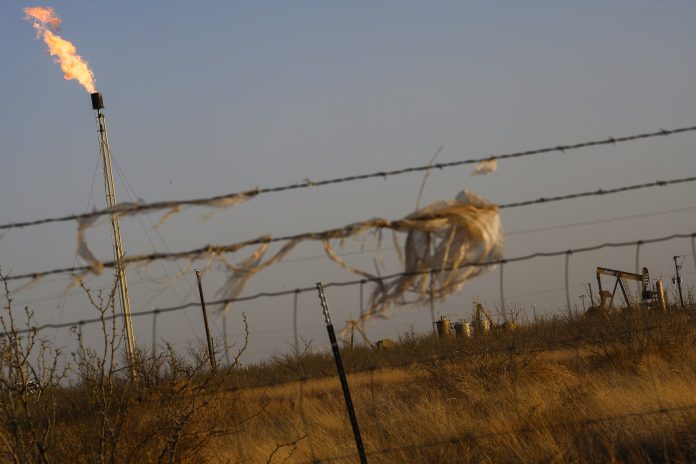
The energy industry-spanning Environmental Partnership has proved effective in cutting methane emissions and the flaring of natural gas from oil wells.
That’s according to leaders of the Texas Oil & Gas Association and the Texas Alliance of Energy Producers, who say the Washington, D.C.-based consortium of 100 of the top oil and gas companies succeeded last year in increasing the number of monitoring surveys to quickly and proactively find and fix methane emissions by 43 percent to achieve a 14-percent cut in the total flared volumes reported.
The companies make up over 70 percent of the U.S. onshore oil and natural gas industry.
“As the Partnership’s membership has expanded, so have its actions to cover more emissions sources across the energy supply chain,” TXOGA President Todd Staples said from Austin. “Progress was achieved through involvement in the Partnership’s eight environmental performance programs that span the entirety of the energy supply chain.
“As such in 2022 Partnership members took significant action. Their efforts also advanced industry knowledge on the capabilities of aerial detection technology as well as understanding methane emissions profiles and the primary sources of methane emissions.”
Staples said American energy “is a technology industry that’s always advancing the latest in innovations and collaborations to produce and deliver the energy that powers modern life in a cleaner, stronger and better way.
“The Partnership’s growing environmental performance programs are driving significant strides in emissions reductions and improved environmental performance through opportunities to take action, learn and collaborate,” he said.
TAEP Executive Vice President Karr Ingham, a petroleum economist, said from Amarillo that declining emissions from oil and gas exploration and production “are a tremendous success story that is rarely told or even acknowledged.
“The Environmental Partnership not only provides a meaningful organizational framework for companies to trade information on the best practices for achieving lower emissions, it’s also a reporting framework for quantifying those reductions,” Ingham said. “The Partnership consists of oil and gas companies up and down the supply chain and of all sizes and scopes of companies.
“As is the case with TXOGA, a significant number of those companies in Texas are Alliance member companies as well.”
Ingham said TXOGA’s report “is true statewide and beyond and it is certainly true in the Permian Basin.
“Flaring rates have plummeted in recent years and are now well below 1 percent, which is an enviable accomplishment that numerous other producing states have not managed to achieve,” he said. “Most impressively the emissions reductions have occurred even as production itself has continued to increase for both crude oil and natural gas.
“Texas and the Permian are producing at record levels and volumes continue to increase. It seems antithetical that both can be true, providing record and growing volumes of petroleum energy to our economy and increasingly to other economies around the world with all the benefits that come with that while at the same time reducing the emissions of CO2 and methane.”
Ingham said the data refute claims by the Biden administration “and its allies in the radical environmental movement that increased energy production is occurring at the expense of the environment and therefore that energy production and consumption must be severely constrained going forward.
“The lack of abundant, affordable energy weakens, not strengthens, our ability to achieve economic and environmental sustainability over the long term,” he said. “The same is true of total emissions nationally with total U.S. greenhouse gas emissions from all sources having declined dramatically over the last two decades or more, now accounting for only 12 percent of all global emissions.
“This has occurred during a time of economic and consumption growth and fantastic increases in petroleum production with Texas leading the way. We can indeed have the best of both worlds and we do with growth in production and consumption powering our economy while at the same time reducing emissions significantly including from E&P activities.”



